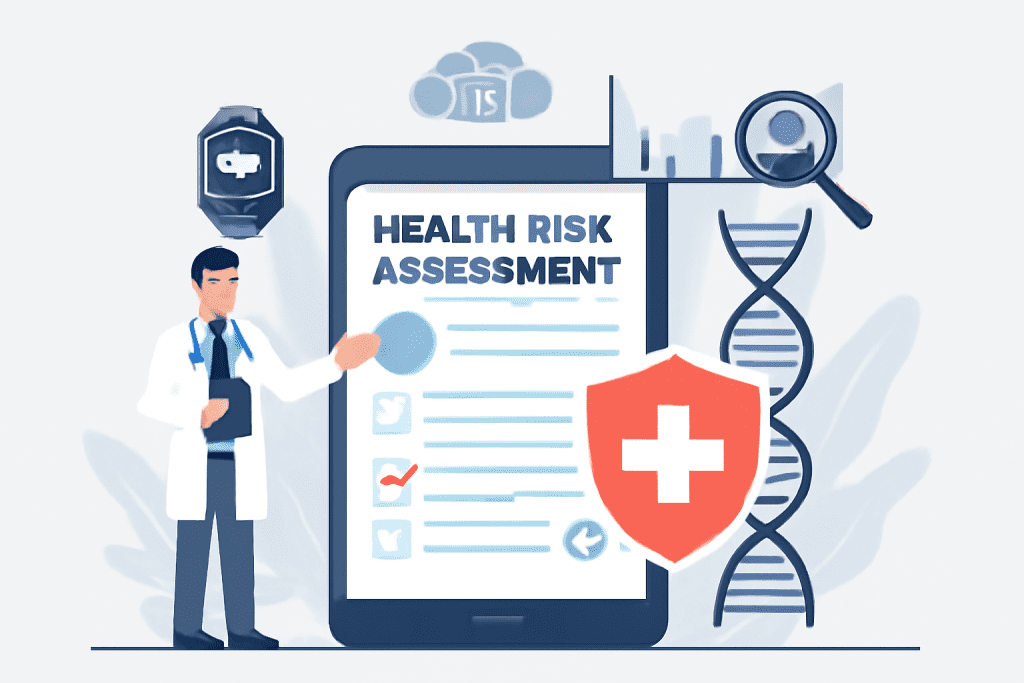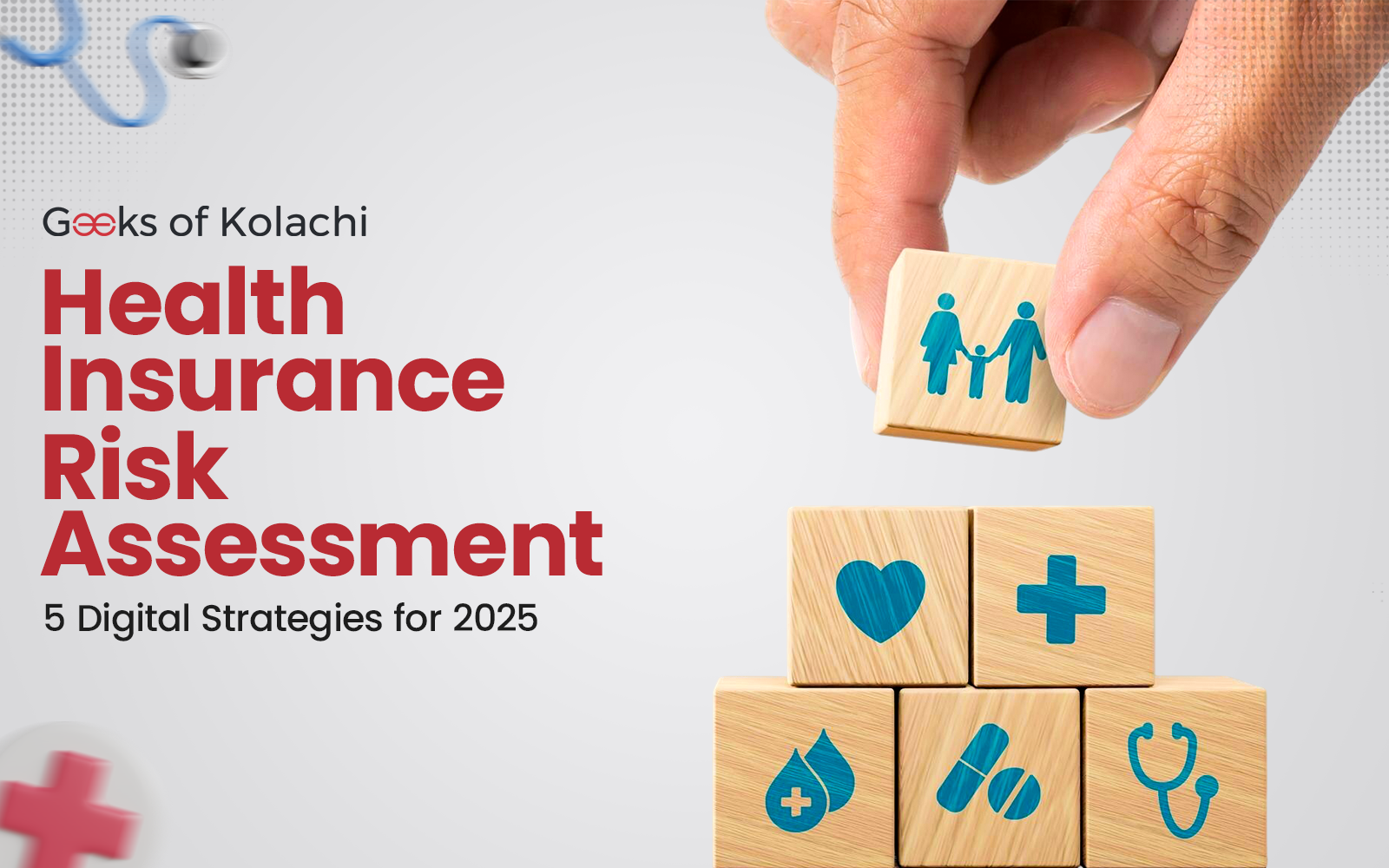In today’s increasingly digital healthcare landscape, health insurance risk assessment is no longer a manual, once-a-year formality. The industry is rapidly shifting toward automation, driven by the demand for faster, more accurate, and cost-effective tools. With healthcare costs on the rise and chronic disease prevalence increasing, insurers and employers alike are turning to digital solutions to modernize how they evaluate and manage health risks.
But here’s the catch: not all organizations have the same budget. The good news? Technology has democratized access to effective health risk assessment tools. Whether you’re a small benefits provider or a large-scale payer, there are scalable strategies available to help you automate risk assessment without breaking the bank.
Let’s explore five proven digital strategies that organizations can adopt today, based on their financial capacity and strategic needs.
Table of Contents
ToggleWhat is a Health Risk Assessment?
Before diving into the strategies, it’s important to understand what exactly a HRA- health risk assessment entails. An HRA is typically a questionnaire combined with biometric screening. It collects data about an individual’s lifestyle, medical history, and physical measurements to evaluate their current and potential health risks.
The HRA is often the first step in preventive health planning. It helps identify high-risk individuals, informs care coordination, and supports wellness programs. Yet, despite its value, many still ask: what is a health risk assessment and how is it used effectively?
In insurance, HRA data powers underwriting, pricing models, and intervention targeting. In Medicare, for example, a health risk assessment Medicare form helps identify seniors who may need chronic care management. For employers, health risk assessments serve as the foundation for wellness programs and can even influence premium contributions.
Strategy 1: Digital HRAs with Biometric Integration (Budget: Low to Moderate)
One of the most accessible forms of automation is digitizing your HRA process. Platforms now offer online or app-based forms that are user-friendly and secure. These digital tools can be integrated with biometric screenings, allowing data to flow seamlessly into health dashboards.
Unlike traditional paper forms, digital HRAs, also known as health risk appraisal, reduce friction and improve completion rates. When paired with wearable tech or on-site biometric kiosks, they offer a more holistic view of an individual’s health. Companies like Cigna and even smaller municipalities have implemented such tools with measurable ROI.

This level of automation also empowers providers to take early action. The combination of self-reported data and real-time biometrics enhances accuracy and enables insurers to build more precise insurance risk assessments.
For a deeper understanding of risk assessments, including their qualitative aspects in public health, check out the CDC’s Risk Assessments Resource.
Strategy 2: Predictive Analytics and AI Models (Budget: Moderate)
The next evolution of risk assessment in health insurance lies in artificial intelligence. Predictive modeling can sift through millions of data points—claims history, lifestyle patterns, biometric results—to forecast future health risks.
AI models can identify who is at risk of hospitalization, which members are likely to develop chronic conditions, and what interventions can be most effective. This level of insight supports proactive care and reduces long-term costs.
Many healthcare software solutions are incorporating AI to improve the accuracy and efficiency of these assessments, further enhancing the overall healthcare management process. If you need bespoke software development to tailor these solutions to your specific needs, it’s essential to work with a development team that understands the intricacies of healthcare data, similar to what is discussed in our medical practice management software: key budgeting & cost factors.
To learn more about AI’s role in healthcare, the NIH article provides useful insights on how AI is transforming healthcare systems.
Strategy 3: Real-Time Monitoring with IoT Devices (Budget: Moderate to High)
For organizations ready to level up, incorporating IoT (Internet of Things) devices is a game-changer. These include fitness trackers, smartwatches, and home-based diagnostic kits that collect continuous health data. Platforms like Healthentia have made it possible to use this data for automated, ongoing health and risk assessment.
This strategy is particularly effective for managing high-risk or elderly populations, including those on Medicare risk assessments. Real-time monitoring provides timely insights into patient behavior and physical changes, allowing health plans to respond dynamically.
Such high-end risk assessments bring a new level of personalization to insurance, moving away from static models to fluid, behavioral-based evaluations.
Wearable health devices, such as fitness trackers, can contribute to your personalized care strategy. Learn more about their benefits in the Mayo Clinic’s Guide on Wearables.
Strategy 4: Advanced Dashboards for Risk Stratification (Budget: Enterprise-Level)
For large payers or insurance firms with the budget to invest, sophisticated analytics dashboards offer comprehensive risk assessment in insurance. These tools consolidate data from multiple sources, assign risk scores, and display actionable insights for care teams and underwriters.
These dashboards facilitate risk assessment in healthcare environments where managing population health is a core focus. They support compliance, reporting, and predictive modeling at scale.
Additionally, aggregated data from these platforms can guide benefit design, pricing adjustments, and provider network management—key areas in insurance and risk healthcare.
To ensure the protection and privacy of health data within these systems, it’s important to stay informed about HIPAA compliance. Check the HHS HIPAA Resource for guidelines and security standards.
Strategy 5: Personalized Coaching with Explainable AI (Budget: Variable)
Last but not least, we’re entering an era where health risk insurance can go beyond detection to active intervention. By combining risk scores with explainable AI, insurers can offer personalized coaching to members.
Using techniques like SHAP (Shapley Additive Explanations), models can identify specific behaviors affecting a person’s health risk—like irregular sleep patterns or poor nutrition. The system then delivers nudges or recommendations to correct these habits.
Not only does this enhance engagement, but it helps shift the model from reactive to preventive. This approach to health insurance risk assessment is highly adaptable for various budget levels, as platforms can be scaled up or down based on user volume and feature sets.
How to Choose the Right Strategy for Your Budget?
Not every organization needs to go all-in on the most advanced technology right away. Here’s a simplified breakdown:
- Small Budget: Digital HRAs + basic biometrics
- Medium Budget: Predictive analytics + IoT integration
- Large Budget: Dashboards + real-time risk stratification + AI coaching
No matter your size, the goal is to build a foundation that supports smarter, faster health insurance risk assessment processes.
Challenges in Automation (and How to Overcome Them)
Despite the benefits, automating risk assessment in health insurance comes with its own set of challenges. Data privacy, integration with existing platforms, and user resistance can be significant roadblocks.
To overcome them:
- Ensure HIPAA compliance and invest in secure data architecture.
- Choose platforms with open APIs to ensure interoperability.
- Use gamification or financial incentives to drive user participation in health risk assessments.
Education and transparency are key. When users understand how their data is used to improve outcomes and lower costs, they are more likely to engage.
As healthcare moves further into the digital age, the role of health insurance risk assessment is transforming. No longer a static checkbox, it is now a dynamic, data-driven engine that powers better decisions, healthier lives, and more efficient systems.
With the right tools and strategy, any organization—regardless of budget—can automate and optimize how they assess risk. Whether you’re collecting baseline data or building an AI-powered coaching platform, the future of risk management health insurance is already here.
Ready to modernize your health insurance risk assessment strategy?
Take the first step towards smarter, more efficient risk management today. Whether you’re just getting started or looking to optimize your existing system, our team is here to help you tailor a solution that fits your needs and budget.
Contact us now to explore how our digital strategies can transform your health risk assessment process!
Frequently Asked Questions
- What is a Health Risk Assessment (HRA)?
A Health Risk Assessment (HRA) is a tool used to evaluate an individual’s health status by collecting data about their lifestyle, medical history, and physical measurements. It helps identify potential health risks, informs preventive care, and guides wellness programs. Typically, it involves a questionnaire combined with biometric screenings. - How does an HRA impact my health insurance coverage?
While completing an HRA doesn’t directly affect your insurance eligibility or premiums, it provides valuable insights that can help tailor your healthcare plan to better meet your needs, potentially leading to more personalized care and cost-effective solutions. - What kind of questions are included in an HRA?
HRAs encompass a wide range of questions covering physical activity, dietary habits, sleep quality, stress levels, mental health, and both personal and family medical histories. Some assessments may also include questions about socioeconomic factors and access to healthcare services.
- Why should employers incorporate HRAs into wellness programs?
Employers can utilize HRAs to gain a deeper understanding of their workforce’s health trends, allowing for the development of targeted wellness programs. These initiatives can enhance employee well-being, increase productivity, and potentially reduce overall healthcare expenditures.
- How long does it take to complete an HRA?
The duration to complete an HRA can vary, but many are designed to be completed in approximately 15-20 minutes. The time investment is minimal compared to the potential health benefits gained from the insights provided. - Are the results of my HRA confidential?
Yes, the information you provide in an HRA is confidential. Reputable platforms adhere to strict privacy standards, ensuring that your personal health data is protected and used solely for the purpose of improving your health outcomes. - How often should I complete an HRA?
It’s recommended to complete an HRA annually. Regular assessments help track changes in your health status over time, allowing for timely interventions and adjustments to your health plan as needed. - Can an HRA detect all health conditions?
While an HRA provides valuable insights into your health risks, it is not a diagnostic tool. It’s essential to consult with a healthcare professional for comprehensive evaluations and diagnoses.
